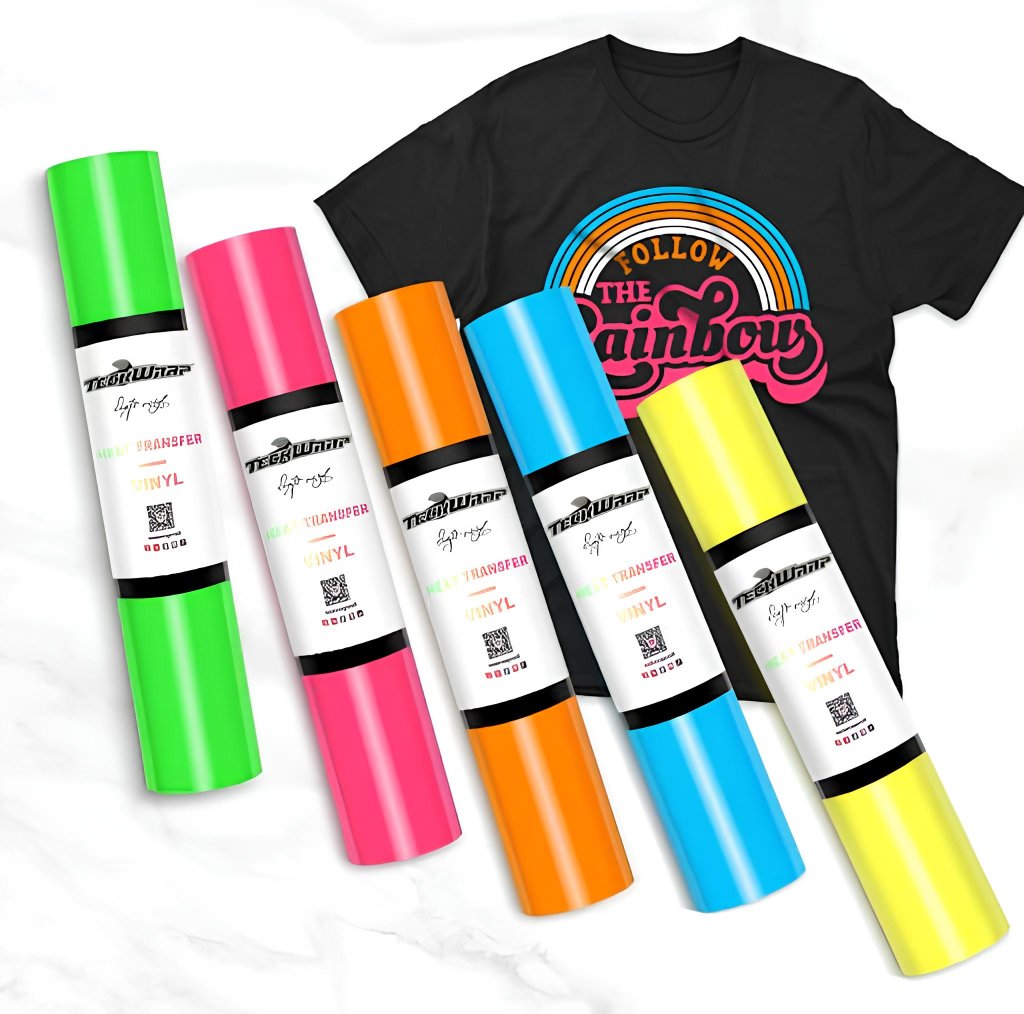Polyester fabric has become very famous and is now often used for clothes, accessories, and other textiles. It is a good choice because it is long-lasting, wicks away moisture, and doesn’t wrinkle or shrink.
People often use heat transfer vinyl (HTV) images to decorate polyester items to make them more personal and unique. However, the process of choosing the right HTV needs to be thought out carefully.
In this detailed article, we’ll talk about choosing the right HTV for Polyester and give tips that will help you apply heat transfer vinyl to this flexible synthetic fabric successfully.
Understanding the Polyester Challenge
Understanding the challenges of applying heat transfer vinyl on synthetic fabrics, especially polyester, is crucial. Polyester’s resistance to absorbing water complicates the HTV application process, making it difficult to achieve a reliable bond.
Polyester can be hard to work with because it doesn’t absorb water like natural fibers like cotton do.
Cotton quickly absorbs glue from heat transfer vinyl. The most important thing is to choose the right HTV that sticks well to polyester fibers and keeps the design’s durability and good looks.
Types of HTV that Work Well with Polyester

1. Standard Heat Transfer Vinyl (HTV)
Standard HTV, which is vinyl with a sticky back, can be used successfully on textile fabrics. Polyester has a natural resistance to sticking; it’s essential to ensure enough heat and pressure are used during the transfer process. Most of the time, the best way to get consistently good results is to use a heat press.
2. Low-Temperature HTV
Some HTV brands have low-temperature vinyl that is made for fabrics like Polyester that are easy to damage. When applying these kinds of vinyl, you need to use lower heat settings, which makes it less likely that the fabric will get burned or damaged. They stick well to the rayon and keep the material from falling apart.
3. HTV Made Just for Polyester
Some HTV products are made to work with Polyester and other synthetic fabrics. These particular kinds of vinyl have been carefully created to overcome the problems caused by Polyester’s unwillingness to stick. Most of the time, they need lower heat settings, but they work well and don’t hurt the cloth.
Tips for Ensuring Successful HTV Application on Polyester
1. Check the Mix of Fibres
Some polyester fabrics may have other materials, like cotton or spandex, mixed in with the Polyester. Before putting HTV on a cloth, it’s essential to look at where it’s in because blends can act differently than pure Polyester. Depending on the situation, you might need to change how you apply.
2. Use the Right Temperature and Pressure
When applying HTV to Polyester, you must use the temperature and pressure settings that the makers suggest. Too much heat can damage the fabric, and not enough heat can make it hard for the vinyl to stick to the material. Getting the best conditions is more accessible with a heat press with settings that can be changed.
3. Pre Press the Fabric
To get the polyester fabric ready for HTV, use an iron or heat press to press it first. This first step gets rid of wrinkles and wetness, which makes it easier for the vinyl to stick. Also, pre-pressing helps find problems with the fabric, like when it melts or gets too hot.
4. Cover the Cloth
Put a silicone or Teflon sheet between the polyester fabric and the heat source, like an iron or heat press, to keep the material from getting damaged. This protective layer acts as a barrier, stopping direct touch and making it less likely that the Polyester will burn or melt.
5. Test it on a Small Scale.
Before putting HTV on the whole clothing or fabric, it’s wise to test it on a small, hidden area first. This test run lets you see how well the vinyl sticks and decide if you need to change the temperature, pressure, or length of time you apply it.
Conclusion
Personalizing textile items with heat transfer vinyl (HTV) can be a fun and rewarding art, as long as you pay attention to the type of HTV you choose and how to use it.
Whether you prefer standard HTV, low-temperature vinyl, or HTV made specifically for Polyester, if you follow the suggested guidelines and do mini-tests, you can get great results while keeping the fabric’s integrity.
With the right tools and techniques, you can quickly turn your polyester clothes and items into one-of-a-kind works of art that show off your style and creativity.
Frequently Asked Questions
What Are the Most Difficult Things About Using Htv on Polyester?
Because polyester doesn’t absorb wetness easily, it can be hard to use heat transfer vinyl (HTV) on it. Polyester is less likely to stick to glue because it doesn’t absorb water. It can affect the quality of the vinyl application. To overcome these difficulties, you need to choose the right temperature, pressure, and HTV.
Can I Use Normal HTV on All Kinds of Polyester Fabric?
Standard HTV can be used on many polyester fabrics, but the results can differ based on how the material is made and what it is made of.
Some polyester blends or types may need a particular kind of heat transfer vinyl (HTV) or lower heat settings to get the best adhesive without damaging the cloth. Before picking vinyl, you need to know what the fabric is made of.

